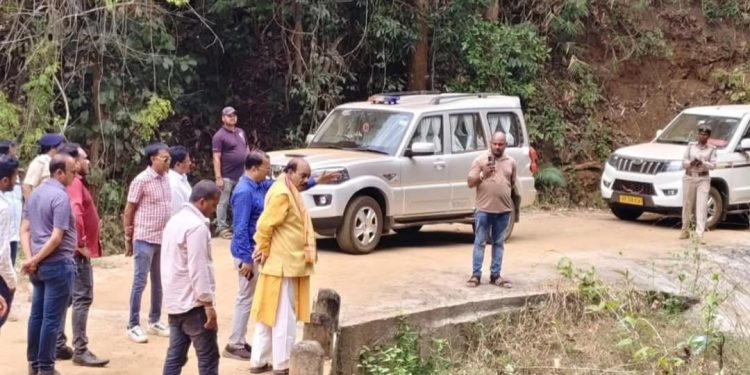Bhanjanagar: A network of around 100 advanced AI-powered cameras will be installed in Ghumusar North and South forest divisions in Ganjam district as part of the Forest and Environment department’s plans to deploy such surveillance devices across the state’s forests with an aim to curb poaching and illegal tree felling. In addition to the cameras, 16 AI surveillance towers will be constructed at strategic locations for efficient monitoring in the two forest divisions. “Both forest divisions have submitted proposals to the state government for approval, with implementation expected in the coming days,” Bhanjanagar MLA Pradyumna Kumar Nayak told Orissa POST.
Nayak said the installation of AI cameras will help track and apprehend poachers and timber smugglers. “It will also enhance the safety of endangered wildlife and aid in preventing illegal transportation of minor minerals,” he said. To boost tourism, various projects are also being planned in both Ghumusar forest divisions. Ten cottages will be constructed near a hill stream along the Ulingia-Bhalingia road to provide accommodation for tourists. Additionally, the government will revive the historic tradition of building glass houses on hilltops, which are reminiscent of the colonial era when British officials enjoyed panoramic views from similar structures, the MLA added. Further, tourist cottages will also be built near the Bhanjanagar reservoir at a cost of around Rs 10 crore. “Specialised equipment from England will be imported for the project.
Additionally, three wooden cottages will be built within the forest division to promote eco-tourism,” Nayak said. Given the rising movement of elephants in the region, a dedicated elephant hospital will also be set up to ensure proper care and treatment for the giants. Sick elephants from Ganjam, Nayagarh and Kandhamal districts will receive treatment at the facility, he said, adding that a 10-acre forest near Beruabadi has been designated to establish the hospital, work on which is set to commence soon Nayak expressed confidence that these initiatives will significantly enhance forest protection and promote tourism in both Ghumusar forest divisions, contributing to both conservation and local economic growth. In recent years, wild animals have been increasingly straying out of forests to nearby human habitats in search of food.
To address this issue, the Forest department has planned cultivation of fruit-bearing trees such as guava, mango, and jackfruit on 10-acre area at three different sites to ensure a sustainable food supply for wildlife, Nayak said. Additionally, the Chakara Ghat and Ghatishula areas are being developed to attract tourists. Nayak stated that an initial allocation of Rs 6 crore has been received for Chakara Ghat’s development, with another Rs 6 crore expected soon. Similar initiatives of installing AI cameras in other states showed positive results, prompting a trial installation in Similipal and Rourkela forest divisions last year, which yielded promising outcomes. Based on these results, the state plans to expand the project by installing AI cameras in all 51 forest divisions. State government officials have requested proposals from all forest divisions to determine the number of cameras required.
According to North Ghumusar Divisional Forest Officer (DFO) Himanshu Sekhar Mohanty, the division has proposed the installation of five towers and 50 cameras. Similarly, South Ghumusar DFO Binod Acharya has submitted a proposal for 13 towers and 30 cameras. Legislator Nayak praised the government’s initiative, stating that AI camera installations would significantly aid forest management and wildlife protection efforts.






































